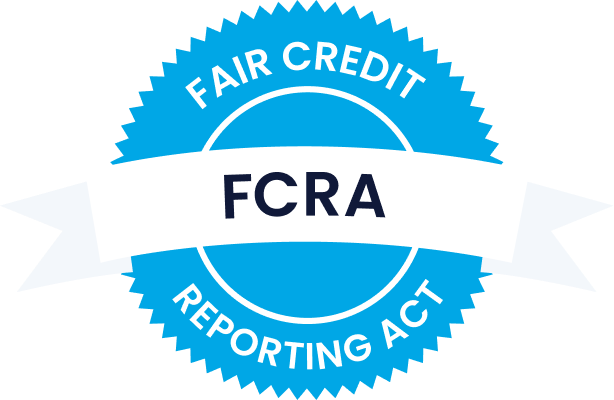When theft or vandalism descends on your rental property, it feels like a violation. Whether this is a common problem, a recent spate of criminal activity, or a unique set of circumstances, there are steps you can take to protect your rental property.
Here’s how property managers can effectively deter vandals, and why understanding your landlord insurance coverage and engaging with neighbours and tenants can help minimize the risk of vandalism.
What’s considered rental property vandalism?
Rental property vandalism is when someone intentionally damages property. Common types of residential property damage can include defacing or destroying your home or parking structures. Cutting down trees without permission, destroying landscaping, smashing windows, graffitiing, egging a house, or dumping trash are all considered vandalism.
According to the U.S. Department of Justice, most graffiti occurs on apartment buildings next to dark alleyways or in spaces open to the public. Lighting the area will heighten the risk and likely deter offenders. Promptly painting over graffiti can also discourage a repeated graffiti offence.
Broken residential windows are typical examples of vandalism. There are different factors affecting the cost of repairs. The window type and the number of windows can determine the costs. For example, the cost of repairing impact glass, such as hurricane-proof windows, is estimated at $55 per square foot. Repairing a damaged window frame can cost between $200 and $600.
If an owner delays window repairs, it can cause the home to be less energy efficient, driving up the electric costs.
Understanding landlord insurance policies
Check your landlord insurance to ensure it covers vandalism or if it is additional coverage to your policy. An insurance agent can let you know if the insurance pays for the actual replacement cost or only a depreciated replacement cost. Your policy might have a deductible where you must pay a specific out-of-pocket expense before the insurance will cover damages.
Understand your legal rights and responsibilities regarding vandalism. Some insurance policies may not apply to vandalism inflicted by your tenants. An insurance company with vandalism coverage will pay for broken windows or any damage to the property listed in your policy.
Landlord insurance usually does not cover personal property, including your car, the tenant’s car, or any damaged personal belongings. Learn more about what is and isn’t covered by standard landlord insurance policies.
Although burglary is insurable, vandalism and burglary are separate violations. If breaking and entering occurs and property is stolen or damaged, that would not fall under vandalism. The landlord must add burglary to their landlord insurance policy, as it covers the rental property exclusively.
Keep a detailed record of incidents and know who to call if your property is vandalized. If there is a theft or an act of vandalism, report the incident to the police. You will also want to contact your insurance company and describe the type of property damage, when the destruction occurred, and if you have any witnesses to the criminal activity.
Provide a sense of security with safety measures
Landlords should take safety measures to protect their investment property, and the first step is getting landlord insurance. You can also reduce the chance of defacement to your property by actively warding off acts of theft or vandalism.
Abandoned or vacant properties incur more vandalism and often attract a crime of opportunity. You can take several steps to secure the exterior perimeter and assure your prospective tenants that security safeguards are in place, including:
- Securing the exterior perimeter of the property with a fence or gate, if possible
- Installing security cameras with a remote monitoring system
- Reinforcing locks, doors, and any entry points
- Adding exterior lighting or outdoor motion sensor lights
Exterior lights triggered by movement are an excellent solution to reduce light pollution. They will also startle anyone approaching the property. A locked gate is another deterrent to criminal activity.
Strengthen tenant education and communication
Open communication between tenants and landlords is critical when establishing guidelines for property safety. As a responsible landlord, be responsive to tenant concerns, and work together to create safety procedures. Educate your tenant about the potential for inviting criminal activity with unlocked gates and doors. If you have security systems in place, such as a home security system or security camera, provide your tenant with step-by-step instructions on using these security systems.
Build community relationships
Many households that work hard to take care of their property and get to know their neighbours are in a better position to keep theft or vandalism at bay. Some simple steps you can take are to visit with neighbours and introduce tenants to your them. Also, by joining community watch groups and staying informed on community news, you can anticipate any negative impacts on your rental property.
Implement a rigorous tenant screening process
Sometimes, a tenant or a friend of the tenant inflicts property damage. While a security deposit and insurance may help pay for repairs, you can also prevent intentional property damage from happening in the first place by using a tenant screening service like SingleKey.
With screening services, property managers can verify landlord references and employment history to ensure their rental is in good hands.
FAQ: Essential strategies to prevent rental property vandalism
Vandalism can take many forms. However, defacement, graffiti, egging, and breaking windows or doors are the most common.
Accidental damage is not considered vandalism. Intentional damage, no matter the circumstances, is considered vandalism. For instance, if a tenant is locked out of their home and smashes a window to enter by sheer panic, that is still considered vandalism.
Keep your property tidy, and ensure your entrance is visible so neighbours can see your home from across the street. Install motion sensor lights or audio warning trespassers that they are on camera. Having a security system in place will deter criminal activity. Visit with your neighbours regularly.
Our final thoughts
Vandalism or trespassing are concerns for both tenants and property managers. As a landlord, you can take measures to identify areas on your property that might attract criminal activity, including theft or vandalism. Know your rights and understand what counts as vandalism inflicted by a tenant. By running background checks through a service like SingleKey’s tenant screening, you can efficiently screen applicants, ensuring your tenant will be good stewards of your home.





